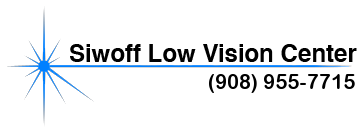(Reprinted from Visibility, Vol. 6 Iss. 1 pp. 10-13)
The Visually Evoked Potential (VEP) is an objective measure of the functioning of the human visual system. It measures the strength of response to the signal (amplitude) as well as the time it takes for the signal to arrive at the primary visual cortex.1-2 The VEP uses a computer to select electrical signals from the brain that originate from the eye. VEP has been used in the past, primarily with infants and young children, to determine if they have sight.3-5 Now we find that the technology can reveal secrets of how the human visual system processes information.
The patient (“A.A.”) presented with the complaint that she could not read. Distance VA was tested with The Original Distance Chart for the Partially Sighted, arranged by William Feinbloom, OD, PhD. Near VA was established with The Lighthouse Near Acuity Test (Second Edition), Modified ETDRS with Sloan Letters. The patient had sufficient acuities for reading small print. Yet, when she was given text of various sizes, she could not read text at any size, large or small. This finding prompted a VEP evaluation.
Gold cup electrodes (Grass Model F-E56 H Astro-Med Inc., West Warwick, R.I.) were applied to the scalp with EEG paste. The electrodes were placed 4 cm above the inion on midline and 4 cm above the brow on midline. The ground electrode was placed midway between the other electrodes. The impedance of the electrodes, measured prior to testing, was between 6 and 10 K-ohms.
A Diopsys Enfant™ System (Diopsys Inc., Pine Brook, New Jersey, USA) was used with a checkerboard reversal pattern at 85% contrast viewed at one meter. First the check size with the biggest amplitude is selected.
- 128 X 128 4 cycles/degree
- 64 X 64 2 cycles/degree
- 32 X 32 1 cycles/degree
- 16 X 16 .533 cycles/degree
The contrast was set to Michelson 85%. The mean luminance was 66.25 cd/m2. The checkerboard reversed at two per second. The testing time was 20 seconds.
Testing was performed monocularly with best corrected spectacle correction. The four check sizes were analyzed to determine which produced the largest amplitude. This check size was used four more times with ophthalmic trial frame prisms. The protocol used an 8 prism diopters, base up, base right, base down and base left. The N50, N75 and P100 were all identified. The amplitude was measured by subtracting the N50 from the P100. The orientation of the prism that resulted in the largest amplitude was selected. If two orientations resulted in large amplitudes, the prescribed orientation was placed between both original orientations. For example, if the signals peaked in the Base-In and Base-Up orientations, the prescribed prism for the patient was both BU and BI. If three orientations resulted in large amplitudes, the orientation was placed 180° away from the smallest amplitude. If there was no improvement, no prism correction was prescribed. In the case of “A.A.”, 8 prism diopters was the size of prisms in both eyes. In other patients, other sizes of prisms are used, depending on a formula used with acuities. Although, in the case of “A.A.”, the prism is the same in both eyes, i.e., same size and direction, this is not always the case; both eyes do not necessarily take the same prism.
The signal must arrive at the primary visual cortex by 100 msecs. If responses to signals are delayed, i.e., there is a latency in response, empty information arrives at Broca’s area and, therefore, cannot be converted to language, which is necessary for reading and speech. One way to understand this is to think of a train leaving the station every 100 msec. If the train arrives late, empty boxcars will be sent to the next stop.
Results:
When tested with only the conventional correction, the patient, “A.A.”, demonstrated significant latencies in right and left eyes. Prisms decreased latencies in both eyes. The right eye went from 110.0 to 101.6 msecs, and the left eye went from 113.3 to 105.0 msecs. Once prism was added to the correct refraction, “A.A.” could read normal print easily.
Impressions and Conclusion:
Our ongoing research with a large sample of patients has demonstrated that ophthalmic prisms can change VEP amplitudes and latencies and improve visual acuity and function over and above conventional spectacle prescriptions. This method has applications for anyone with mild to severe alexia caused by cortical damage or optic nerve disease.* Our outcomes suggest that when responses to signals are delayed, Broca’s area cannot process the information needed to convert the signals into words and sentences, and therefore reading effectively is not possible.
References:
1. Odom JV, et al. Visual evoked potentials standard. Doc Ophthalmol 2004; 108:115–123.
2. Sokol S. Visually evoked potentials: theory, techniques and clinical applications. Surv Ophthalmol 1976 Jul-Aug;21(1):18-44.
3. Taylor MJ, McCulloch DL. Visual evoked potentials in infants and children. J Clin Neurophysiol 1992; 9(3):357-72.
4. Simon JW, et al. A new visual evoked potential system for vision screening in infants and young children. J AAPOS 2004; 8:549-554
5. Wygnanski-Jaffe T, Panton CM, Buncic JR, Westall CA. Paradoxical robust visual evoked potentials in young patients with cortical blindness. Doc Ophthalmol 2009; 119(2):101-7. Epub 2009 Jun 23.
*The author is preparing a full-length research paper on these results of evolved technical application of VEP
